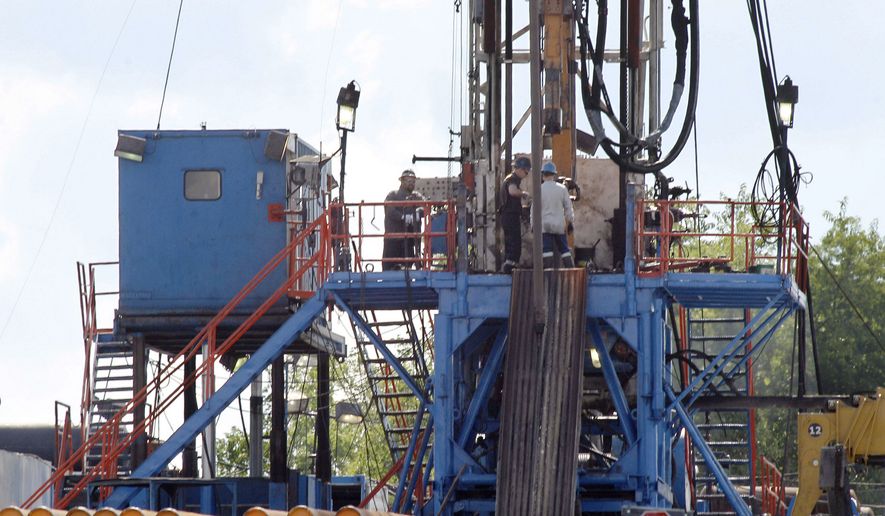OPINION:
Gauging the effects of hydraulic fracturing on the nation’s drinking water is much like considering whether the glass of the precious stuff is half-full or half-empty. When energy companies employ hydraulic fracturing in search of oil and natural gas they should take care, and most of them do, to avoid contamination of nearby reservoirs of drinking water. But the incoming Trump administration must determine again whether there’s an unacceptable risk to supplies of fresh water.
A long-awaited report by the Environmental Protection Agency (EPA) prompts concerned parties to draw their own conclusions from the findings. In it, the agency came to no conclusion about whether hydraulic fracturing, or fracking, poses a “systemic” danger to drinking water. The drilling technique is generally conducted without incident, but there have been a few cases of contamination. In extracting previously unreachable oil and gas resources, fracking pumps a mix of water, sand and chemicals down wells shafts to crack open rock formations and release the oil and gas.
The EPA study says water quality vulnerability occurs when fracking chemicals are spilled on the ground or escape from well shafts to surrounding groundwater, or when the chemicals are mistakenly injected into underground water reservoirs, or when fracking wastewater is stored in unlined pits and seeps into the water table. Those rare exceptions shouldn’t form the basis of a rule. Just days before the EPA’s study was released, U.S. Energy Secretary Ernest Moniz touted the “tremendous economic benefits” of fracking and said objections from opponents have not been science-based.
Environmentalists nonetheless took the study to mean oil and water don’t mix. “The Sierra Club applauds the EPA for its science-based fracking report, confirming what so many already knew; fracking presents a clear and present threat to our water, our public health, and our communities,” says the club’s Lena Moffitt.
The energy industry draws the opposite conclusion. “After five years of study, EPA found nothing to substantiate the claim that fracking causes widespread water contamination,” says Steve Everley of North Texans for Natural Gas. “With the release of this report, we can finally put to rest the idea that fracking poses a serious risk to groundwater.”
Nevertheless, some environmentalists, including many who will never be satisfied until all the wells are spiked, doubt the industry’s ability to frack without systemic damage to water quality, and some of them even charge the agency with planting an anti-fracking landmine in the public discourse before handing over the EPA to the fossil fuel-friendly Donald Trump. “It is beyond absurd for the administration to reverse course on its way out the door,” says a spokesman for the American Petroleum Institute.
There’s no debate that fracking has been the boon to the U.S. economy. More than a million wells have been drilled since the 1940s into shale formations scattered over the Northeast, the Great Plains and Texas, 250,000 alone since 2000, vaulting the United States to first place in world energy production. A paper published this month by the National Bureau of Economic Research concluded that fracking has added $3.5 trillion in value to U.S. stock markets since 2012.
Every family has a right to drinking water uncontaminated from the effects of industry. They also have the right to share in the nation’s abundant energy resources. It will fall to Donald Trump to decide how to balance those interests in a way that America’s glass will be half-full, or better yet, overflowing.




Please read our comment policy before commenting.